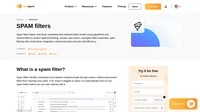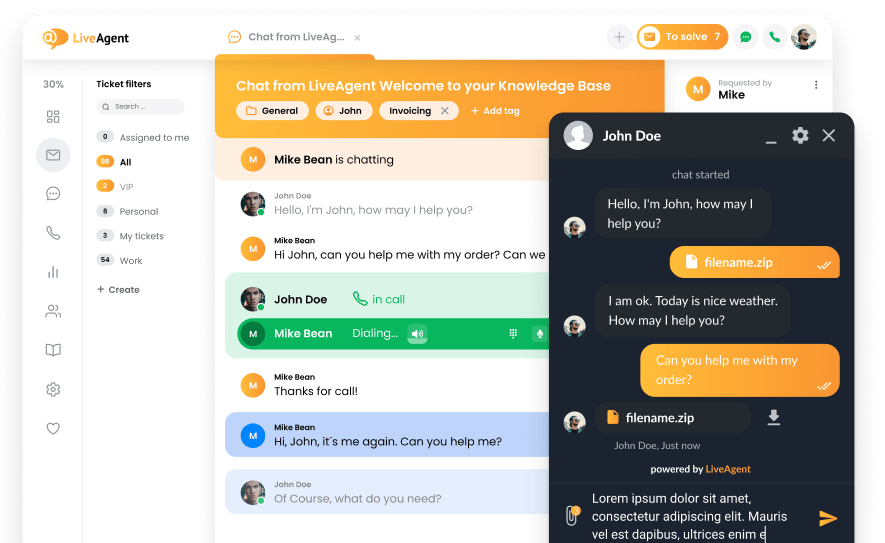Restricted help center restricts customer to be logged in in order to submit or reply to tickets. By restricting your help center, you can avoid spammy or duplicate tickets and increase performance and efficiency. On the other hand, not restricting your help center will help you stay “closer” and more open to your customers.
What is a restricted help center?
A Restricted Help Center is an online platform that provides targeted assistance to users by restricting access to its contents based on user authentication. This ensures that only specific users or groups, often within an organization, can view the help center’s restricted articles and other sensitive data. The system is designed to enhance data security, streamline support processes, and offer a tailored user experience.
Purpose and Necessity
The primary purpose of a Restricted Help Center is to safeguard sensitive information while providing users with the necessary support. Here’s why they are necessary:
- Data Security: By restricting access, organizations can protect proprietary and sensitive information from being accessed by unauthorized individuals. This is crucial in preventing data breaches and ensuring compliance with privacy regulations.
- Targeted Support: Allows organizations to offer specialized support tailored to the needs of different user groups, improving user satisfaction and reducing irrelevant support requests.
- Controlled Information Dissemination: Ensures that only relevant information is shared with specific user segments, minimizing the risk of information overload or misuse.
Key Features of a Restricted Help Center
Access Control and Permissions
Access control is a fundamental feature of a Restricted Help Center, ensuring that only authenticated users can access restricted content. This involves:
- User Authentication: Requiring users to sign in before accessing the help center. This can be enhanced through multi-factor authentication (MFA), which uses a combination of passwords, tokens, and biometrics to verify user identity.
- Custom User Segments: Setting view permissions based on user roles, tags, or organizational structures, ensuring tailored access.
- Permission Management: Administrators have the ability to define who can access specific articles or sections within the help center, enabling fine-grained control over information dissemination.
Content Management
Effective content management is crucial in maintaining a Restricted Help Center:
- Restricted Articles: Articles that are not visible to the general public but are accessible to specific user segments.
- Content Visibility: Administrators can control which users can see specific content based on authentication and permissions, ensuring that users only access information relevant to them.
- Regular Updates: Content should be regularly updated to ensure it is accurate and relevant for signed-in users, reflecting the latest organizational policies and procedures.
Brand Personalization
To maintain a consistent brand image, Restricted Help Centers often offer customization options:
- Custom Logos and Themes: Align the help center’s appearance with the organization’s branding, enhancing brand consistency.
- CSS Customization: Advanced styling options to tailor the look and feel of the help center to match organizational aesthetics.
- Email Templates and Layouts: Consistent communication and organization of content, ensuring that all interactions align with the brand’s voice and style.
Benefits of Implementing a Restricted Help Center
Enhanced Data Security
Restricted Help Centers significantly bolster data security by controlling who can access sensitive information. This reduces the risk of data breaches and ensures compliance with privacy regulations. With robust security controls like Identity and Access Management (IAM) and Privileged Access Management (PAM), organizations can safeguard against unauthorized access and manage user identities efficiently.
Improved User Support
By providing targeted support based on user roles, organizations can enhance the effectiveness of their help centers. Users receive assistance tailored to their specific needs, improving overall satisfaction and reducing the volume of irrelevant support requests.
Efficient Communication
Restricting access allows for more efficient communication within specific user groups. Users sign in to access personalized content, ensuring that they receive relevant information and support. This targeted approach reduces information overload and streamlines communication channels.
Implementing a Restricted Help Center
Setting Access and Usage Rules
To implement a Restricted Help Center, organizations must establish clear access and usage rules:
- User Segmentation: Define which users or groups can access specific content, ensuring that each segment receives pertinent information and support.
- Visibility Settings: Adjust the help center’s visibility to align with organizational needs, balancing openness with security.
- Internal Content: Create content that is only accessible to internal staff or specific user groups, ensuring that sensitive information is protected.
Regular Maintenance and Content Updates
Maintaining a Restricted Help Center requires diligence:
- Content Relevance: Regularly update articles to ensure they provide accurate and current information, aligning with organizational objectives and user needs.
- Security Measures: Continuously monitor and adjust security settings to protect sensitive data, leveraging tools like vulnerability management to identify and address potential weaknesses.
User Activity Tracking and Feedback
To optimize the help center, organizations should:
- Monitor User Activity: Track how users interact with the help center to identify areas for improvement, using analytics to gain insights into user behavior.
- Gather Feedback: Implement mechanisms for users to provide feedback, facilitating continuous improvement and ensuring the help center evolves with user needs.
Frequently Asked Questions
What is a restricted help center?
Restricted Help Center restricts customer login to submit and respond to tickets. This allows you to avoid spamming and duplicate notifications. This increases efficiency and effectiveness.
What are the types of restricted help center?
The Restricted Help Center may limit the communication channels a customer can contact. In addition, it may limit the number of submissions that one person can submit.
Does LiveAgent offer a restricted help center feature?
LiveAgent offers a limited help center feature. This has its advantages, as it allows you to avoid spam and double submissions, but unfortunately also increases the distance between the customer and the brand.
After learning about the restricted help center, you might want to explore more about frequently asked questions to get a better understanding of common inquiries. Diving into improve customer service can provide you with valuable tips to enhance your business interactions. For those looking to streamline their operations, a look at the helpdesk portal will show you how to organize customer support efficiently. If you’re interested in real-time solutions, real-time chat is a great next step to maintain engaging customer communication.

 Български
Български  Čeština
Čeština  Dansk
Dansk  Deutsch
Deutsch  Eesti
Eesti  Español
Español  Français
Français  Ελληνικα
Ελληνικα  Hrvatski
Hrvatski  Italiano
Italiano  Latviešu
Latviešu  Lietuviškai
Lietuviškai  Magyar
Magyar  Nederlands
Nederlands  Norsk bokmål
Norsk bokmål  Polski
Polski  Română
Română  Русский
Русский  Slovenčina
Slovenčina  Slovenščina
Slovenščina  简体中文
简体中文  Tagalog
Tagalog  Tiếng Việt
Tiếng Việt  العربية
العربية  Português
Português 





